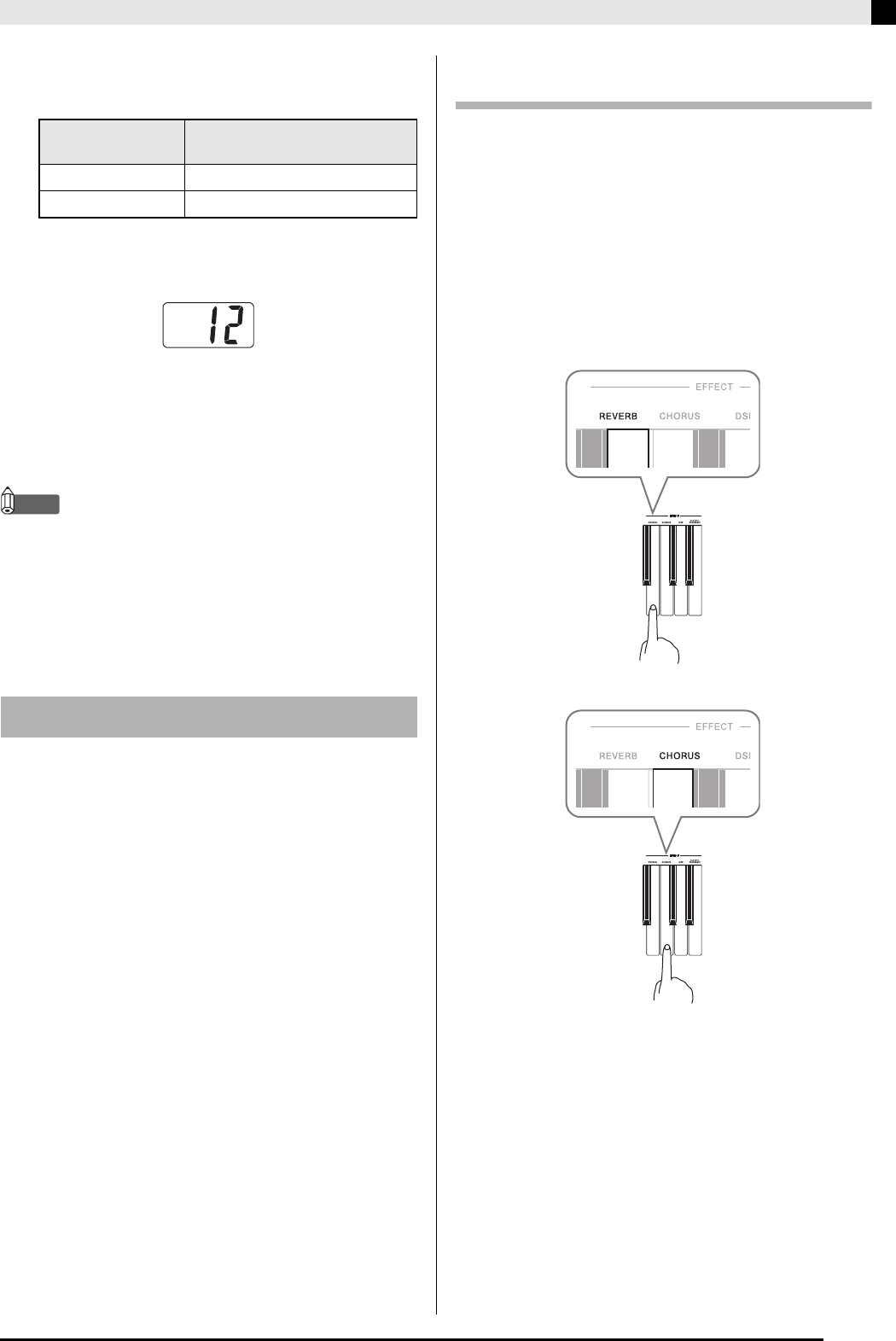
Playing with Different Tones
E-11
3.
Use the + and – buttons to turn keyboard split
on or off.
• Releasing the TEMPO/SETTING button will cause
the display to change to the number of the currently
selected low-range tone.
4.
Use the procedure under “Selecting and
Playing a Tone” on page E-7 to select the low
range tone.
Example: 11 STRINGS
NOTE
• You can also specify the location of the keyboard split
point. See “Configuring Settings with the Keyboard” on
page E-21 for more information.
• You can configure the keyboard so it is layered with two
tones in the high range. To do this, first perform the layer
operation (page E-10). After that, split the keyboard as
described above.
Reverb. . . .Makes your notes resonate.
Chorus . . .Adds more breadth to your notes.
Acoustic Resonance . . .
When the damper pedal is pressed,
reproduces the harmonic resonance within
a grand piano.
DSP . . . . . .Digitally processes tones to for more
sophisticated effects. Each tone is preset
with a default DSP effect (drawbar organ
tone + rotary speaker, for example).
To configure reverb and chorus effect
settings
1.
While holding down the TEMPO/SETTING
button, press the REVERB or CHORUS
keyboard key. Keep the TEMPO/SETTING
button depressed until you finish step 2 of this
procedure.
• This will cause the lamp above the TEMPO/
SETTING button to flash and the currently selected
reverb or chorus value to appear on the display.
Reverb
Chorus
When the display
shows this:
It means this:
oFF Keyboard split off
on Keyboard split on
Using Effects
PX800_e.book 11 ページ 2006年10月12日 木曜日 午後12時5分


















